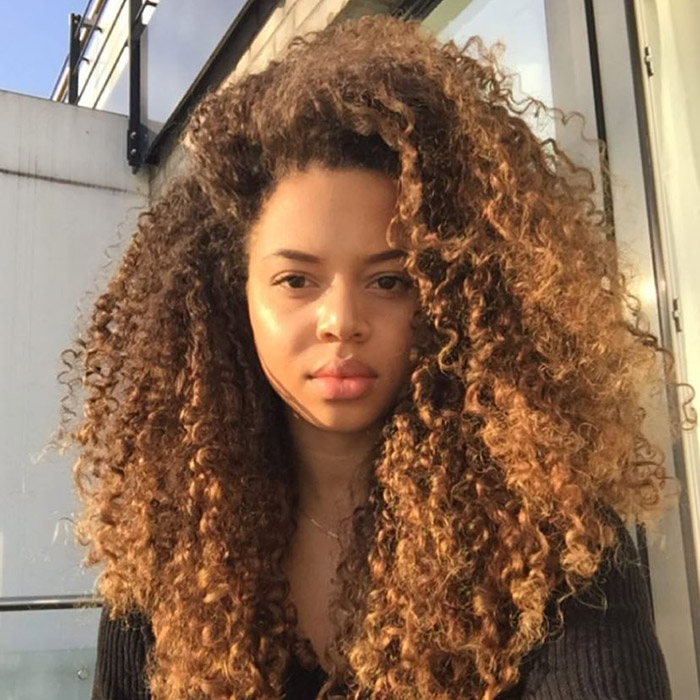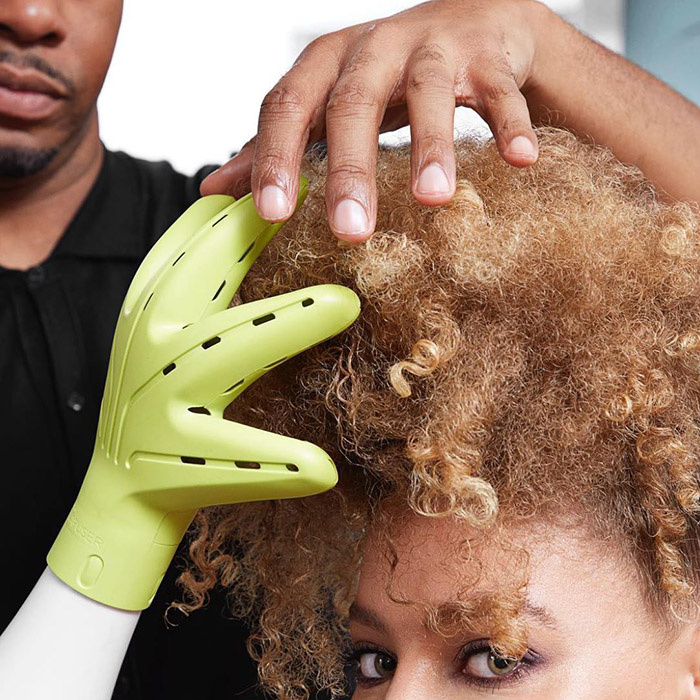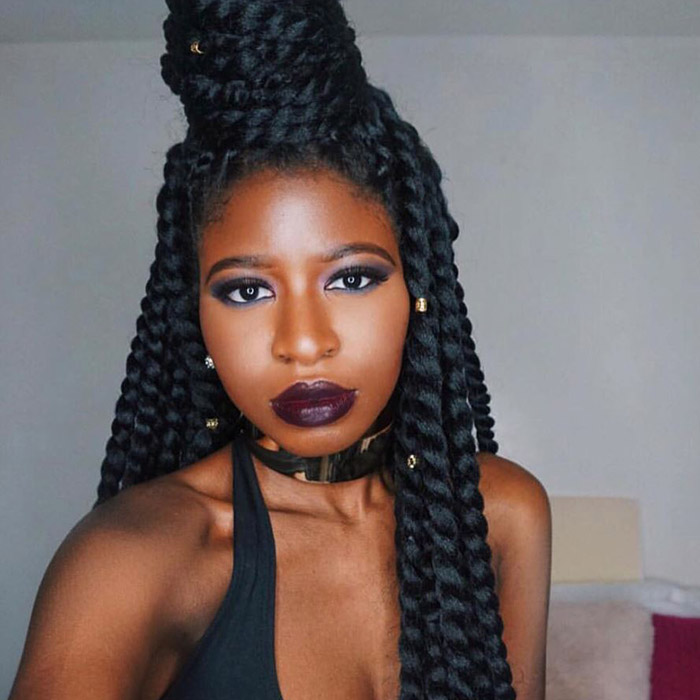
Image Source: @sika.no
Although I’ve always known that my hair has a few different textures to it (I’m mostly 4a but there are a few areas that are 3c and one patch that is 4b…sometimes”>, being that, for years I wore super short hair, it didn’t really matter all that much to me. But y’all, now that I’m on this journey to grow my natural hair out without the “assistance” of a relaxer? My hair, including all of these textures, have been having it out!
So much in fact that I’ve semi-recently come to the conclusion that the reason why I was having bouts of not gaining length retention is because I was treating all of my hair like it was just alike when that simply isn’t the case. Just like a lot of us have a foot that is slightly larger than the other or even a breast that is a bit bigger than the other, most of us have head of hair that has multiple textures to it. And you know what? That is OK.
The key is to stop fighting against this very real reality and figure out how to work with our hair instead. Through some trial and error, I’ve figured out how to do just that. In the effort to hopefully make things easier for you too, I’ve enclosed some suggestions that have been working for me below.
Be strategic when you’re deep conditioning your hair. Anyone who is being intentional about growing their hair out knows that deep conditioning is an absolute must. It’s what provides our hair with extra moisture so that the risk of it becoming dry and brittle in between wash days is significantly less. That said, when you’re about to apply your deep conditioner to your locks, make sure that it stays on longest on the areas of your hair that are the kinky/curliest. It’s the coils in your hair that need extra special attention; not the parts of your hair that are on the straighter side; those typically only need conditioner on them for one-third of the time of the rest of your hair.

Image Source: @devacurl
Use a diffuser when needed. Keeping heat out of your hair is ideal. Although I’ll be the first to say that my hair has grown more since I’ve blown it out on wash day and braided it the rest of the time (if I want to stretch it out”>. Anyway, if you’re like me and you do use low heat about once or twice a month or you’ve got a special engagement coming up and there’s no time for air drying, on the parts of your hair that are extra curly, consider using a diffuser on them. It gives you more control over how your curls end up during the drying process.
Make sure your fingers are your biggest styling tool. Styling tools on curly hair. I don’t know about you, but what I’ve discovered is they are more like a foe than a friend most of the time. This is especially the case when I’m trying to use a comb or even a vent brush on certain parts of my hair. While on the 3c parts, it works like a charm, I can almost hear the pulling on the 4b areas. That’s why I really have come to accept that the best way to style my hair is to use my fingers as much as possible. I can feel my way through all of the different textures and alert myself of what parts need more pressure and what parts need less.

Image Source: @naturallytemi
Wear protective styles. Right now, even as I am typing this out, my hair is in the first set of braids that I’ve had since, shoot, I was a teenager (I’ll be 45 in June”>! Aside from how awesome it is to get up, day after day and—other than spray a little oil on my scalp or when I need to wash it—not have to think about my hair or all of my textures at all? It’s a real dream. Not to say that protective styles dismiss me from maintaining my natural hair, but every once in a while, it’s a great way to give it all a bit of a break.
Braid the “kinkier parts” at night. You’ve probably read that if your natural hair has some length to it that you should put it up into a pineapple at night and, no matter how long it is, you should wrap it up with a silk or satin scarf. I won’t argue with either of those points. I will add something to them, though. If all you do is tie your hair up, the parts that are kinkier/curlier than others have a greater chance of becoming tangled and/or matted overnight. You can keep them stretched out by applying a little oil to them (some sweet almond oil or avocado oil should do the trick”> and braiding those areas up. That way, when you wake up in the morning, they’ll be elongated so that you’ll have less styling to do.
Relax. Relate. Release. Even with the tricks that I just shared, the reality is you’re gonna have some days that are easier to handle than others. The less you stress over how many different textures you have and the more you accept and embrace this fact, the easier it will be to figure out how to make all of your textures work in harmony with one another. Besides, what would you rather have—different textures or no hair at all? Exactly.
How do you care for your multiple textures? Share with us in the comments.
